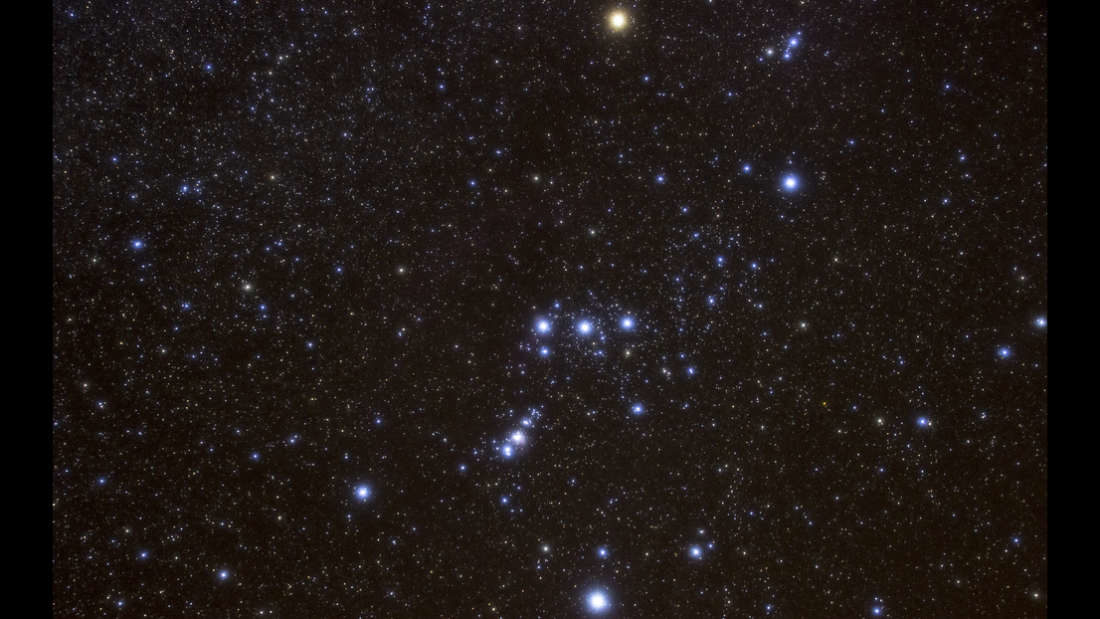
Betelgeuse can be seen at the top of the image
A ripple of excitement is passing through the community of astronomers, both amateur and professional, at reports that
Betelgeuse has dimmed significantly over recent days. Those who study the star most closely are hosing down the idea the world is about to experience perhaps the greatest event in the history of astronomy, but that doesn't mean there isn't something interesting going on.
To understand the fuss it is necessary to know that
Betelgeuse, the deep red star in Orion's shoulder is a red supergiant with a mass large enough that it will inevitably become a supernova one day. Moreover, given its development, that day will be soon, by astronomical standards.
When this occurs, it will be a truly awe-inspiring sight. Betelgeuse is conveniently placed, far enough away there will be no danger to Earth, but close enough that its brightness will be breathtaking, possibly outshining the full Moon.
While there are several nearby stars that will eventually become supernovae, Betelgeuse probably heads the queue. There is general agreement
its maximum life expectancy is less than a million years, and one study estimates its remaining life at 100,000. An explosion in our lifetimes is not likely, but more credible than for fellow supergiants like Antares or Spica.Consequently,
the report of a sudden dip in brightness, referred to as a "fainting", hasn't been received quite the way it would have with any other star. Nevertheless, two explanations have been offered, each more likely than the possibility this is a prelude to stellar Armageddon.
The first point astronomers have noted is that
Betelgeuse is a variable star, whose brightness is constantly changing. Although recent measurements have it fainter than anything previously recorded, we know it is operating on multiple cycles. When the minimums of each cycle come together, the star will look particularly faint, but will brighten soon after.Alternatively, with a stellar wind ordinarily a million times that of the Sun, Betelgeuse could have ejected more dust than usual, obscuring it enough to cause the dimming.
Either way, establishing the explanation should be fun, but not that much fun.
Meanwhile, the nearby supernova drought continues. A galaxy the size of the Milky Way would normally have around one supernova every 100 years. Yet not has been seen since the invention of the telescope, the last occurring in 1604. The only supernova visible to the naked eye since then occurred 32 years ago in the
Large Magellanic Cloud, a hundred times more distant than Betelgeuse, and astronomers are still
writing papers on what they saw.
Oh well, at least we get to marvel a little longer at a star so bloated Jupiter's whole orbit would fit inside. And there is always
Eta Carinae.
Comment: This is particularly notable because scientists recently confirmed that 100 previously catalogued stars just vanished, and not long before that six galaxies were observed undergoing sudden, dramatic transitions into super-bright quasars.
See also:
- Cosmic climate change: Is the cause of all this extreme weather to be found in outer space?
- Sott Exclusive: Nemesis, not 'Nibiru' - Clarifying mainstream reports about 'a large ninth planet' that periodically sends comets our way
- Strange Sun effects detected by world's highest weather stations
And check out SOTT radio's: Behind the Headlines: Earth changes in an electric universe: Is climate change really man-made?